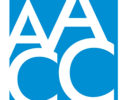Fostering success
By AACC 21st Century Center Staff
May 22, 2018
Community college systems are making foster youth a priority.
More than 400,000 children and youth in the United States are in foster care. What happens when they age out of the foster care system? Only about 3 percent graduate from a four-year college, according to the National Foster Youth Initiative.
In an effort to better help current and former foster youth, the California Community Colleges announced the expansion of its NextUp program. NextUp promotes academic success by using an in-person, individual approach to providing supports and services. Students can get help with books and supplies, child care, counseling and career guidance, educational planning, emergency housing assistance, food assistance, health services, life skills, financial literacy, mental health services, transportation assistance and tutoring.
The program originally was established in 2014 by the California Senate. Twenty-six community colleges operated NextUp. A new state senate bill expands the program to 15 more colleges.
“Students in foster care often face a more challenging path to higher education than many of their peers,” California Community Colleges Chancellor Eloy Ortiz Oakley said in a statement. “Expanding this important program to more colleges will give more foster youth the tools they need to succeed in college and help them accomplish their higher educational goals.”
Other states have created programs to help foster youth succeed in community college. In Virginia, approximately 500 young people “age-out” of the foster system each year. The Great Expectations program was launched in 2008 to help these young people. It was developed through a partnership between Virginia’s community colleges and philanthropists supporting the Virginia Foundation for Community College Education.
Students in the program are paired with an adult coach at one of the 21 participating community colleges throughout the state. The student and coach work together to assess skills and interests, talk about your future, and make a plan for enrolling in college. Coaches help students fill out applications and direct them toward financial resources.
For the 2016–2017 academic year, 1,372 students enrolled in Great Expectations, and 105 students in the program earned certificates or degrees during that same academic year.
How does your institution help current and former foster youth? Sound off on LinkedIn.



